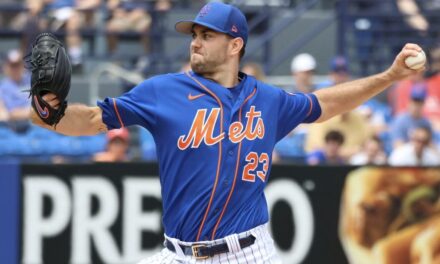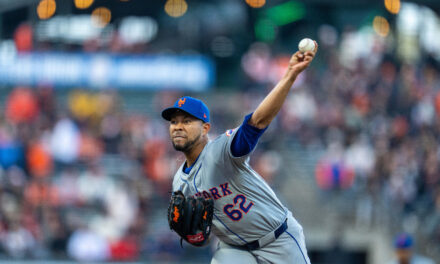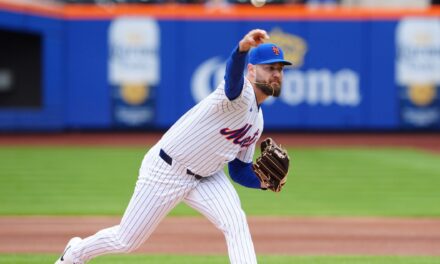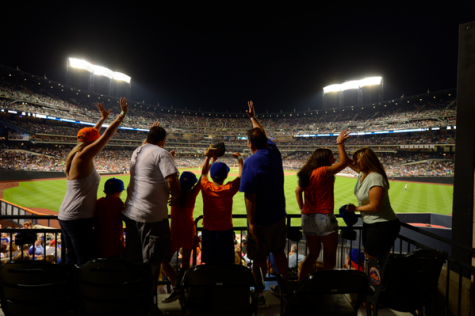
I’ve been accused of having rose colored glasses permanently affixed to my head when it comes to the Mets. When I was a kid I used to pour over potential lineups rationalizing how they could actually win games. Richie Hebner batting third? That could work… Wayne Garrett leading off? Why the hell not? Of course as soon as the season started my hopes would be dashed like a dead seal on a line of jagged boulders off the coast of Vancouver Island. I mean Richie #%$ing Hebner?
Anyway. My dad would always say stuff like “that’s nice son” when I’d bring up potential lineups while bouncing my Spaldeen #4 … “Montanez could be a pretty good cleanup hitter.” He’d pat me on the head and smile as if trying to hold back the “keep dreaming kiddo” that you’d normally share with anyone but a starry eyed kid with baseball cards in every pocket.
Growing up in the late 70’s you kind of learn to deal with the Mets losing. We just figured it was part of growing up in Corona, like the constant rumble of the 7 train and the wonderful smell of empanadas and tostones. I think that’s why those of us fortunate enough to remember the early days have a tough time complaining about the current state. For me it was always easier to complain about high priced and high expectation disasters like 1992 and 2003.
So I have mixed feelings about 2016 … They certainly lack that high priced “what could possibly go wrong?” composition of early 90’s monstrosities, and, given the Mets placement as runner-up for the World Series, you’ve got to feel pretty good about the Mets getting back into the fray — kind of like how you felt after Rocky lost to Apollo Creed.
On the other hand the expectations are admittedly high and the potential for a letdown is something no Mets fan can really ever dismiss, after all there’ve been so damned many letdowns it’s hard to keep track. It’s in our frigging DNA at this point. There’s also the very worrisome dearth of investment in what was a very successful 2015 squad.
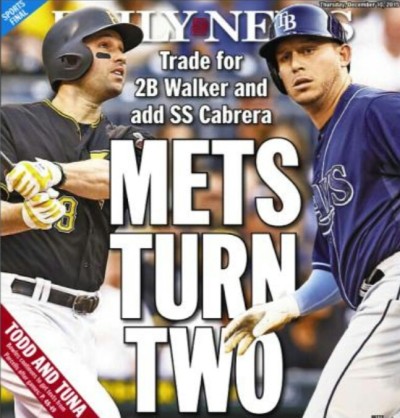
Nevertheless I am pretty sure my glass is half full because, well, just look at it, it’s obviously half full. The Mets have been on something of a roll with their player moves, and one thing I noticed is that they picked up a couple of interesting switch hitters in Asdrubal Cabrera and Neil Walker.
A recent article on fangraphs showed how increasingly, successful hitters are going the other way. On the Mets we need go no further than Curtis Granderson to see the benefit of slapping the ball to the opposite field now and again.
The thing about Walker and Cabrera is that not only are they switch hitters but when you look at their hit spray (I hate that term, it reminds me of feral cats …) they spread the ball around pretty good. Even De Aza (to a lesser degree) can go the other way. This is a trend we shouldn’t ignore, shifts have been roughly doubling across the league every year for the past several seasons and we can be pretty sure there’ll be more of the same in 2016. So, these additions look pretty good in this respect.
The other consideration for next season is the conspicuous absence of a big signing for a big bat. For me, this is definitely the bigger concern.
“Look, we know Cespedes was instrumental to us getting to the World Series, but, I think along the way we learned a few things about ourselves and about the team and I think the way we’ve approached the offseason put some of those lessons in to play.” – Sandy Alderson.
A lot has been made of Cespedes’ contributions and how there was more to the Mets success than Yoenis’ admittedly gaudy numbers, which is true in and of itself, however, what’s been taken for granted is the “tipping point” effect of Cespedes’ presence in the batting order. You have to consider the element of protection both up and down the lineup around him. There’s a reason the Mets hit better after Yoenis was added and it’s hard to fathom how Cespedes’ looming presence was somehow detached from that broader uptick.
The Mets front office is constitutionally disinclined to long, expensive second generation contracts, and so I thought I’d look into it a little bit. I did a quick search of WAR and wRC+ (a scaled rate stat which shows the value of a hitter’s outcomes [hits] while accounting for park effects) from 1980 to the present at 6 different age points to see if there really is a precipitous decline as players age and whether this is worse now than it was during the steroid era.
Strangely, when looking at wRC+ the results can be dramatically skewed by two or three aging but productive players … this can happen when you have Alex Rodriguez and David Ortiz in the league. That being said, contributions of older players appear to have been valuable even going back to the 80’s and 90’s … perhaps this is a function of wRC+, which quantifies a player’s value by runs created (Ortiz had a wRC+ of 138 last year), but the chart definitely shows that veteran players can be valuable in their ability to create runs.
This of course may be a simple function of longevity being a byproduct of competence — only a very good player will still be around well into his late 30’s — nevertheless, it’s surprising because the prevailing notion is that players lose their physical abilities as they age, their bat speed, dexterity, strength, what have you. This wRC+ chart seems to imply that good hitters continue to hit well into their late 30’s and that this hasn’t changed much over the years.
wRC+ by Age
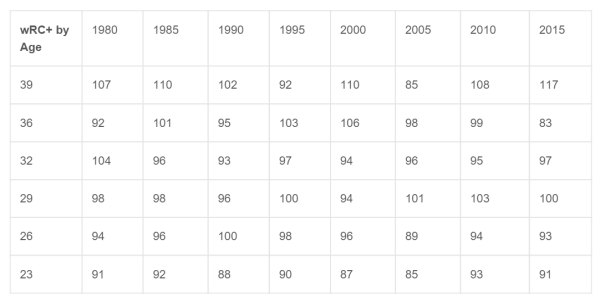
WAR by Age
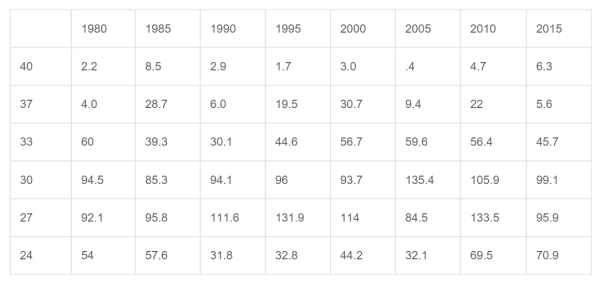
WAR on the other hand is perhaps a more appropriate measure when considering the contributions of aging players because it takes into account the fact that there are fewer players as you move up in age, reducing their aggregate contribution accordingly.
This is indeed the case with major spikes in value occurring between the ages of 27 and 33 … but again, somewhat curiously (when you consider how well some older players performed in wRC+), with the exception of 1985, players between the ages of 39 and 40 never produced more than a combined 8.3 WAR, and 37 year old players never combined for more than a 30.7 WAR (which they did in 2000).
When you contrast that with 27 year olds in 2010 putting up a 133.5 combined WAR, youth definitely has it’s advantages. Also, there is a pronounced recent spike in the contributions of 24 year olds in 2010 and 2015 as they put up the age bracket’s two highest combined WAR figures (69.5 in 2010 and 70.9 in 2015).
So, younger players are definitely trending up in terms of combined value. This shouldn’t shock anyone when you consider that injuries and attrition deplete the ranks of older players. Are younger players getting better? Perhaps, but the wRC+ chart also shows that those veterans that manage to stick around can sometimes be pretty darned good.
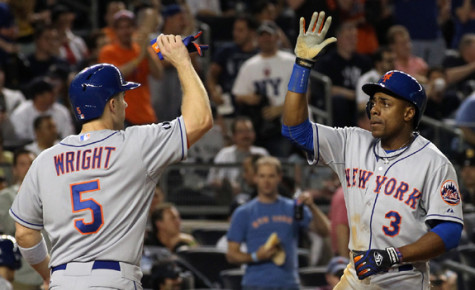
There are two takeaways. Firstly, veteran players retain value into their late 30’s (although there are fewer of them), and that has been true since the early 80’s and it hasn’t really fluctuated much … Secondly, a value driven metric such as WAR really brings out the contributions of players in the 27 – 30 year old bracket, you can’t really ignore that.
If we know anything about Alderson’s approach it’s that he likes to work in the aggregate. This was true in his Oakland days when they spread OBP over a roster (and a system), and it’s true now when they concentrate their focus on younger players who work the count and (at least this off-season) use the whole field.
I think it’s hard to deny that approaching improvement by addressing deficiencies across an entire system has benefits over simply looking for the best guy who can fill a given need at a given time, which seems like a very reactionary after the fact approach.
There isn’t anything revelatory about this … we’ve always known that Baseball is a young man’s game and that great teams tend to have great farm systems. The fact that the Mets are putting this reality into practice is certainly a good thing. The only real surprise with the data above is that steroids over the years didn’t have as big an impact in sheer age related value as you’d think – which might be cause for further review.
In the end I’m keeping my hopes up that this Mets brain-trust knows a thing or two about securing winning “assets” or whatever you want to call them. It’s hard not to feel good about these current Mets because of their unbelievable pitching arsenal. With the exception of 1969 (a terrific omen by the way), I can’t recall a roster as pitching heavy as that of these Mets. But 1969 came and went and those mets were unable to sustain a lasting legacy because they didn’t have the positional depth to support their pitching.
Similarly these 2016 Mets are somewhat lacking on the positional side in terms of major league ready prospects while the organization also seems to lack the resources to purchase quality players on the free agent market, which is certainly foreboding … Still, until I see that dead seal smashed against the rocks I will continue to believe we’re in the midst of something special, something along the lines of a very smartly conceived Mets renaissance.



